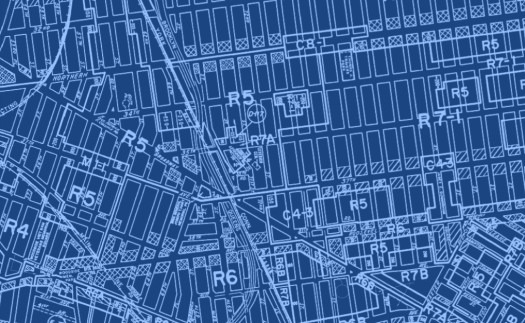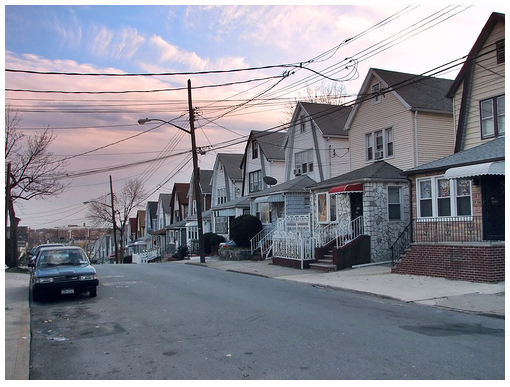
We are celebrating 15 years — and counting — of stories that are deeply researched and deeply felt, that build a historical record of what the city has been.
We are celebrating 15 years — and counting — of stories that are deeply researched and deeply felt, that build a historical record of what the city has been.
“Nearly 40% of the new housing created from 1990 to 2005 were illegal apartments. Many of them are in basements or cellars. These units exist because there isn’t enough affordable housing in NYC.” -Seema Agnani, Executive Director, Chhaya Community Development Corporation
Last fall, we recapped a landmark symposium that the Citizen’s Housing and Planning Council convened to challenge housing officials, designers and developers to reform housing and zoning codes based on analysis of how people are actually living. Fewer and fewer people can afford to live within the existing legal housing standard, so more and more live outside of it. In addition to increased vulnerability to fire and safety hazards, tenants in illegal units have few enforceable rights. And the recent immigrants who comprise a large percentage of tenants in illegal units are often unwilling to seek official help. Some of them end up seeking help from community-based organizations like Chhaya, a community development corporation in Jackson Heights that works to address the unique housing needs of New York’s South Asian community – immigrants from India, Bangladesh, Pakistan, Nepal and Caribbean nations such as Guyana and Trinidad. Seema Agnani, Chhaya’s executive director, has seen firsthand the challenges that illegal dwelling units – particularly basement apartments – pose to immigrant tenants. And she’s also seen the opportunity that legalizing some of these units presents.
For these immigrants and other low-income New Yorkers priced out of the legal housing market, illegal subdivisions provide an undeniable source of affordable housing in New York City. Many of these units are unfit for habitation or otherwise unsafe. But not all of them. In some cases, legalizing a unit would simply require the filing of architectural plans with the Department of Buildings. In others, the impediment to legalization is not the Building Code but the zoning map – the unit might meet legal requirements for safe habitation but the property cannot legally accommodate multiple families. Still others are very close to meeting legal requirements but fall short in a minor way. Architects and planners need to get involved to help community advocates realize this potential for creating affordable housing out of our existing building stock.
Bringing illegal units into the scope of regulation could have a number of positive impacts: tenants’ living conditions would improve; forced displacement would decrease; rental income might lessen the burden on overleveraged homeowners at risk of mortgage default; landlords would begin to report rental income, increasing City revenues and potentially lessening the burden on social services in neighborhoods with large populations of undocumented residents. But how do you do that? Step 1: create an Accessory Dwelling Unit (ADU) code and bring those basements that can be made into safely habitable apartments up to the standards of that code.
What follows is Seema Agnani, executive director of Chhaya, explaining the context and need for an ADU code in her own words. –-C.S.

“Do you know your rights as a tenant?” Flyer detail. Chhaya offers services in Bangla/Bengali, English, Hindi, and Urdu
In 2000, as we were in the process of establishing Chhaya, we completed a needs assessment survey of the South Asian immigrant community around the city and found that 50% of people we talked to didn’t have a lease. Over the years, both owners and tenants have sought us out with concerns: tenants who were living in illegal units and owners who were frustrated because tenants were not paying rent. So education, advocacy and organizing around the issues of illegal dwelling units have become a priority area for our organization.
Basement apartments are a legitimate source of affordable housing; the issue is that they need to be brought up to code. If they were, unsafe conditions would be improved, tenants could be guaranteed their rights, and owners could regularize their ability to collect rent and insure the protection of their property. But we’ve found that many elected officials are afraid to touch this issue; they see it as an issue of neighborhood preservation, with a lot of the more established residents feeling that new immigrants are coming in and ruining their communities. But the City is draining all sorts of resources. Judges in the court system are frustrated with the number of complaints, but there is nothing they can do to tackle the issue. The Department of Buildings is tired of having to issue these fines, despite the revenue. It’s also a huge drain on public resources, resulting in overcrowded schools and overstretched social service provision. But if these units and the population that resides in them could be planned for, it could really be a resource for the city. So last year we went about the process of documenting how many of these units actually exist.

Jackson Heights zoning map. Jackson Heights was one of the first of New York’s neighborhoods designed with the car in mind, which required creating lots with larger areas at the back for garages. This characteristic allows for the existence of separate rear entrances to additional basement units.
The Housing and Secondary Unit Survey – which was designed in partnership with the Citizen’s Housing and Planning Council – was intended to document that these units exist and to assess the feasibility of legalizing them, looking at means of egress, the size of the windows, etc. We looked at two census tracts, one in Jackson Heights and one in Briarwood, Jamaica. Our goal was to look at what the actual data was versus what was on record. We surveyed 446 homes, all registered as single-family, and found that 80% had signs of basement use, and we estimate that 35% of these basement units could potentially be legalized.
These are decisions that should be based on health and safety not necessarily on inches.After analyzing the data, we put forward a series of recommendations that would remove some of the impediments to bringing illegal basement apartments to code. It basically comes down to implementing an Accessory Dwelling Unit (ADU) code. The concept is that the zoning doesn’t necessarily have to change. Many of the neighborhoods in question are zoned for single-family homes, which makes converting a property into a two-family home much more complicated. An ADU code is a way of getting around all of that – it remains a single-family home with an accessory unit.
Many places have already implemented ADU codes: Washington State, Santa Cruz, Yonkers and other parts of Westchester County, for example. But in New York City, the current building code is so strict that it makes legalization very difficult. For example, there is a legal difference between a cellar and a basement. A cellar is more the 50% below ground, a basement is more than 50% above. We’ve seen apartments that are more that 50% above ground at the front of the unit and less in the back. Our argument is that these are decisions that should be based on health and safety not necessarily on inches. If there is enough air and light and if it is safe, then the codes should be more flexible.

144th Street in Briarwood / Jamaica. Briarwood is a mostly residential, multi-ethnic community of one and two-family homes, many of which have basements, backyards and garages. Out of 305 homes surveyed in this area, 52 properties had received some form of complaint related to an illegal conversion. Photo by Flickr user Peter Manzari.
Our proposal is to create an ADU code, starting with a pilot project in a specific area, and then move on to the creation of financial incentives and the establishment of loan programs and grant programs. The ideal scenario would be to pass something at both the state and city level, but because of this issue’s political sensitivity, we are proposing that the City start with a pilot project. We would set a goal of helping maybe one hundred owners go through the process of legalizing a basement unit. That way, the City could learn from this process and also expedite it. One of the challenges is that these apartments already exist, so how do you insure that they have been converted properly in terms of the built-in wiring, piping, etc. A lot of architects are afraid to sign off on these apartments because they can’t do a proper inspection.
We need more architects involved in this work. There’s a real need for spatial, design and construction expertise, as well as help getting into the specifics of building codes. I think that is the actual missing piece for us right now. We have advocates, we have legal experts but we don’t have enough of the design community involved in the process. And if we can get a pilot program going, then we’re going to need architects to help us help individual homeowners through the process of legalization.
The design community could help us think through energy conservation approaches and ways to improve energy efficiency as well. There are a lot of resources available now – through weatherization programs and other stimulus money – that could be used to help with this process. And I think that we could think of an ADU plan as an opportunity to green these neighborhoods.
The majority of these units exist in the outer boroughs, they exist in immigrant communities that have established hubs. Their temples are here; their mosques are here; their community is here. People are willing to live in overcrowded conditions in order to be in these communities. Particularly in Queens, there really has been very little investment in affordable housing developments. If you look at where all of the development has occurred by the non-profit or for-profit sector, it’s pretty shocking when you see how little has been done in this borough. Of course there are political reasons for that, but I also think there’s a perception that everyone in Queens lives in historic single-family homes or nice condos and co-ops. There’s really a need to educate the broader public about the borough itself and what’s going on here. This is where the majority of new immigrants have settled in New York City.
With such a dynamic population, we need to build a base of tenants and owners who want to push for this. So there is a big community organizing component in addition to the policy advocacy work. The forums we convene can get pretty heated. Owners are stressed out about fines they’ve received, tenants are upset because they’re being evicted – we heard cases where families had been living in a neighborhood for over ten years, with kids in local schools, and then a forced eviction pushes them out, often into another illegal basement apartment, given the lack of legal affordable housing – and both groups are angry at their elected officials for not helping them. It’s not an easy issue to organize around. So we’re taking it to the streets. And we’ll see how it goes.
The views expressed here are those of the authors only and do not reflect the position of The Architectural League of New York.
Comments